Category
Search ClassicCarsOnline US
.While amphibious vehicles have been around since the 1700’s (carriages back then) – amphibious technology didn’t merge with automotive technology until around 1900 (so – fairly early in regards to automotive technology.)
A Quick Cruise Through the History of Amphibious Cars
By: Laure Justice
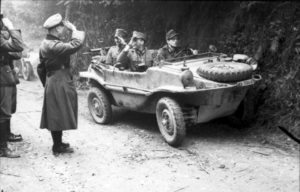
Early Amphibious Cars
Most of the early developments in automotive amphibious technology centered around military use, with the 1944 WWII Schwimmenwagen (shown above) as a perfect example of an amphibious car developed for military use.
Then in 1951, Ben Carlin and his wife successfully crossed the Atlantic ocean in their amphibious car, the Half-Safe, which was a modified 1942 (SEEP – which stands for sea Jeep) Ford GPA. (The Half-Safe is shown below as it enters the port at Copenhagen.)
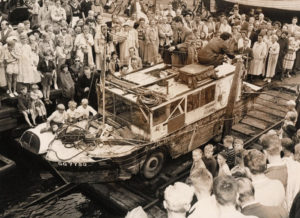 Half-Safe Amphibious Car image By Unknown photographer [Public domain or Public domain], via Wikimedia Commons
Half-Safe Amphibious Car image By Unknown photographer [Public domain or Public domain], via Wikimedia Commons
Say Hello to the Amphicar
As amphibious automotive technology advanced into the 1960’s, these car-boat crossovers began to transform to a more car-like shape, distancing themselves from the boatlike appearance of the early versions.
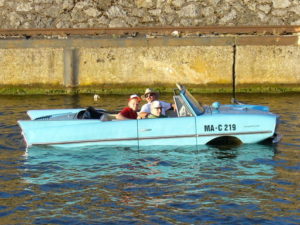
The Amphicar was produced in four colors, Lagoon Blue, Fjord Green, Beach White, and Regatta Red – and only 3,878 were ever produced, with US President Lyndon B. Johnson owning a Lagoon Blue model – which he reportedly used to tease guests and make them think the car was out of control as he drove into the lake.
Modern Amphibious Cars
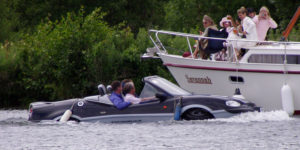
A couple of more recent cars of this genre are the Gibbs Aquada (shown above – and which, by the way, is the type of car Richard Branson used to set a record crossing the English channel in an amphibious vehicle) which has a shape slightly reminiscent of a 1980’s Corvette and is known for high-speed planing on water – and the Water Car (shown below), which is built in California.
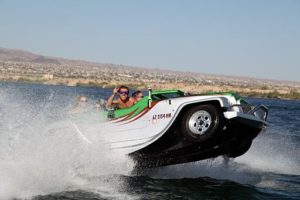
If you are looking to buy or sell a classic car, such as an Amphicar or any other classic, feel free to take advantage of the free listings on the Classifieds page.
Written by Laure
Search ClassicCarsOnline US
. Classic Cars Online US
Classic Cars Online US
- Maximizing Classic Car Investments: Strategies for Success in 2024
- Embracing the Past and Future: Classic Car Trends Unveiled for 2024
- 10 Popular Classic Cars: Timeless Beauties on Wheels
- Put the Pedal to the Medal with New Classic Car Merchandise from Classic Cars Online US
- The Studebaker Company: A Journey from Wagons to Wheels
- Revolutionizing the Road: Unveiling the 1932 Studebaker President and Commander
- The Art Deco Revolution: How 1930s Automotive Design Embraced Luxury and Modernity
- Unveiling the Pontiac Chieftain: A Journey Through Its Iconic Generations
- The Iconic 1960 Chevy Bel Air: Evolution, Design, and Enduring Legacy
- The Timeless Elegance of the 1960 Chevy Bel Air: Exploring its Interior and Exterior Features